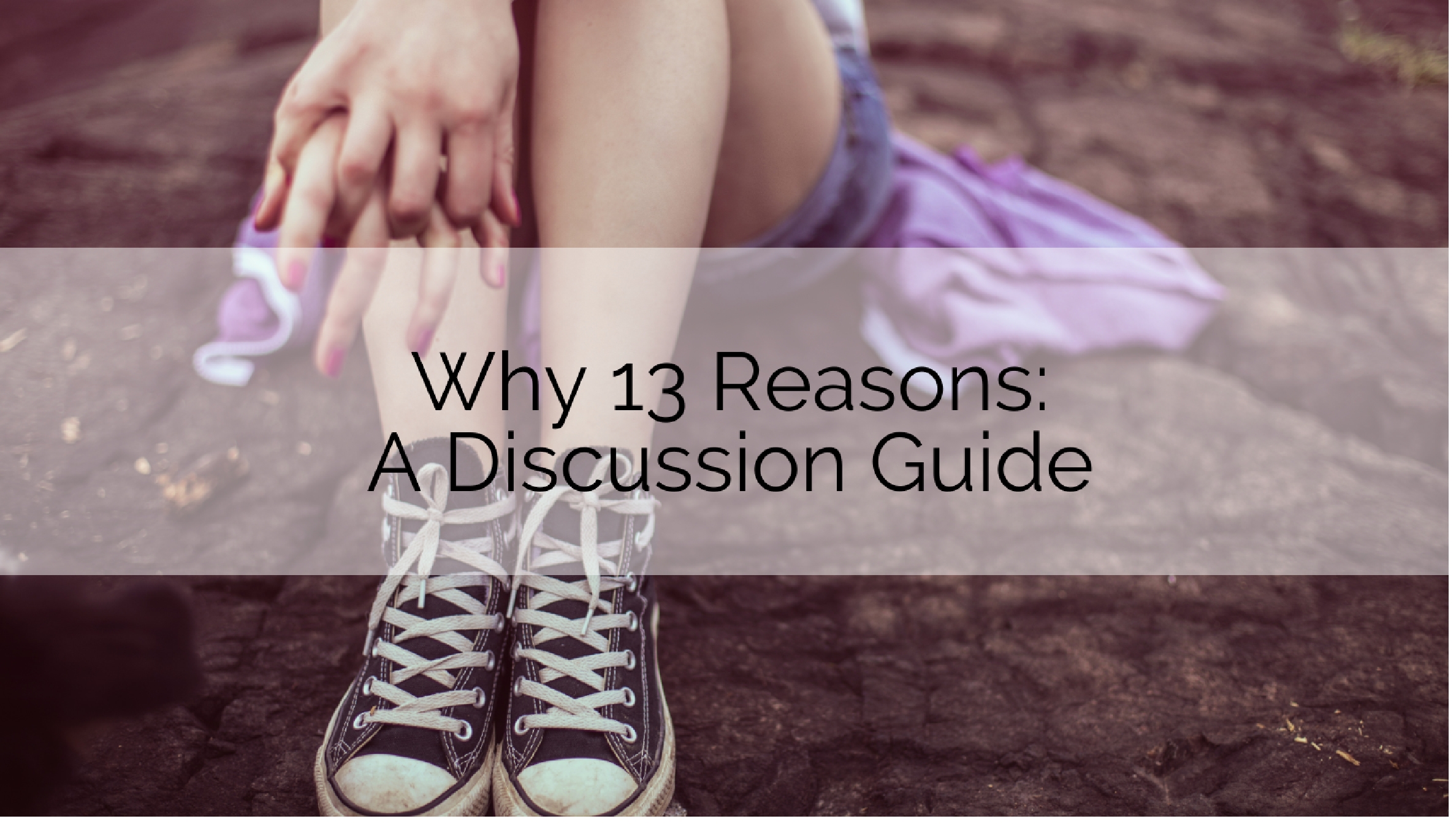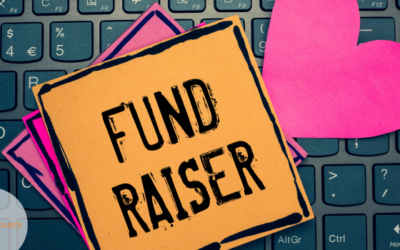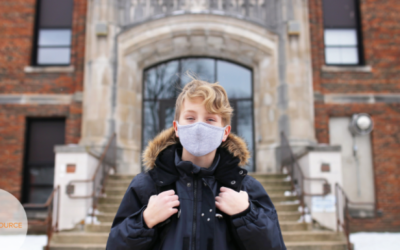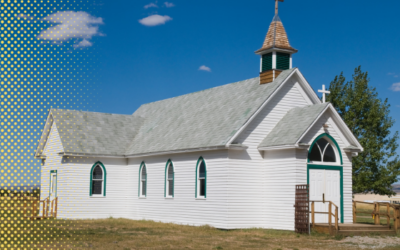By Jamie Walters, DCE, M.A. and Hannah Miller Leftwich, DCE, M.Ed.
Editor’s Note
The following document is meant to be used as a resource. It is not a recommendation or endorsement of the show Thirteen Reasons Why (13RW). The show is rated TV-MA for language, violence, strong sexual content (including sexual assault), and other adult situations. If youth are watching the show, I suggest parents should watch it with them.
Download a printable PDF of this guide, which includes a list of episodes, as well as discussion questions for each episode.
Also see, “Faith, Hope and Love: A Threefold Response to 13 Reasons Why” a theological response and reflection for teenagers, young adults and grown adults made available by LCMS Life Ministry.
Introduction
If you have a teenager (or know one), chances are they have watched (or know someone who has watched) the hit Netflix series Thirteen Reasons Why (13RW). Given the popularity of the series, there are a great number of articles and blogs written about it and in reaction to it. Suffice it to say, the reviews are mixed. For as many that say you should watch it, there are an equal number that say you should not.
Watch It
Those who encourage you to watch the series have numerous reasons, including:
- It’s a conversation starter on difficult subjects;
- Youth workers and parents should know what their students are watching;
- It confronts harsh realities head-on;
- It’s well-written, acted, and directed.
Don’t Watch It
Those who critique the series have equally strong reasons for neither watching it yourself nor allowing teenagers to watch it.
- It glorifies suicide, self-harm, and sexual behaviors;
- It does not discuss matters of clinical depression and/or mental health;
- The material is too heavy;
- Several scenes are too graphic (both rape and suicide);
- It’s unrealistic;
- For those already susceptible to such feelings, this serves as a how-to;
- It’s a revenge fantasy;
- Too much swearing;
- It serves as a trigger for those who experienced such situations.
Whether you watch it or not is up to you. This guide is meant to help prepare you for the discussions that are already happening surrounding the series, and how to facilitate conversations about the topics the show discusses.
As you do, remember that God makes Himself and His love for His children known. God’s grace is evident in the gift of our Savior Jesus Christ, in His work on the cross, in His ultimate work of forgiveness and redemption. Only God can know what is in a person’s heart (Psalm 139:1-18), but we can prepare ourselves for the hard conversations that may weigh us down.
Overview of the Show
Thirteen Reasons Why (13RW) is a series released on Netflix on March 31, 2017, based on the novel Th1rteen R3asons Why by Jay Asher (2007).
The show revolves around Hannah Baker, a student who kills herself, leaving a series of cassette tapes as her suicide note. Throughout the show we hear Hannah narrating, via her tapes, explaining the series of events that eventually led her to the decision of death by suicide.
Viewers ought to realize this series was filmed in a very frank manner. It does not simply “hint” at things, but shows the reality of the situations Hannah, and other characters in the show, experienced. It is not for the faint of heart and will certainly bring up a multitude of heavy discussions with those who watch it. Among those issues brought to light throughout the show are: Bullying, peer-pressure, slut-shaming, rape, cutting, school shootings, stalking, underage drinking, drug use, and suicide.
This show is rated TV-MA1 and is available on Netflix.
Characters of Note
Hannah Baker: The central focus of the series and our narrator. She experiences a multitude of things– bullying, slut-shaming, witnessing rape, being raped herself. Related Characters: Andy Baker (dad, pharmacist) and Olivia Baker (mom)
Clay Jensen: The main character, the eleventh recipient of Hannah’s tapes, and a crush of Hannah’s. Hannah openly admits on his tape that he “doesn’t deserve to be on this list,” but since he is an integral part of her story, she included him. Related Characters: Lainie Jensen (mom, lawyer), and Matt Jensen (dad, professor)
Tony Padilla: The only main character we meet NOT mentioned on the tapes. The person Hannah selected to keep her tapes safe and make sure they are passed on to the appropriate people.
Download a printable PDF of this guide, which includes a list of episodes, as well as discussion questions for each episode.
Resources
Youth Worker Resources
Thirteen Reasons Why (13RW) seems to cover the entire list of high school issues, but how realistic is it really? How does Hannah Baker’s high school experience stack up to reality?
If your high school youth group has ten students it is likely that of the ten:
- 2 struggle with depression or other mental illnesses and are more likely to struggle with ideation of suicide (https://psychcentral.com/blog/archives/2010/03/04/why-are-so-many-teens-depressed/)
- 1 teenage girl has been sexually assaulted. This number increases to nearly 2 in 10 women and 1 in 10 men by the time they graduate from college (https://www.rainn.org/statistics/children-and-teens, https://www.rainn.org/statistics/campus-sexual-violence)
- 1 uses illegal substances and 5 drink alcohol by the time they reach senior year (https://www.drugabuse.gov/publications/drugfacts/monitoring-future-survey-high-school-youth-trends)
- 8 have experienced bullying, 3 have been the bullies (https://nobullying.com/bullying-statistics-2014/)
- 1 identifies as LGBTQ (https://www.prri.org/wp-content/uploads/2015/03/PRRI-Millennials-Web-FINAL.pdf)
- 4 are sexually active (https://www.cdc.gov/healthyyouth/sexualbehaviors/)
When listed, these numbers can paint a grim picture, but also offer an opportunity for intervention and action. Hannah’s tapes address these issues and how they affected both her and the others. Students’ actions (and inactions) are what ultimately led to her choice to end her life. It may be tempting to focus on the flashier aspects of the show–many of the teens drink, abuse substances, and engage in inappropriate sexual behavior–however, to focus on these alone misses out on a discussion on the larger themes: bullying, sexual assault, and depression and suicide.
What is your role as a youth worker?
- Remind your students where they can find their identity– it’s not in the opinions or actions of others, but in God’s claim on them in Baptism as His children. Reiterate the depth and breadth of God’s love for them, the gifts He gives them through Baptism, and the holy community that surrounds them through your church family and youth group.
- Educate yourself on the statistics. Educate parents. Educate your students. Know the warning signs of depression and suicide. Know of local resources for those seeking help. Help parents and students do the same.
- Do not discount your students’ feelings about what they see. What is portrayed in this series is very real and should be taken seriously.
- Encourage your students to react with love. Flip Hannah’s tapes and challenge your students to tell someone face-to-face why they are important in their lives. The impact might be huge!
- A positive environment is imperative for discussions like these. Do students feel welcome and safe in your group? Does bullying happen and is it stopped when it is? Are there supportive adults available?
- Have the tough conversations with parents and students. Talk to church leaders about the realities your students face.
Additional Resources
- Signs of Sexual Abuse: https://www.rainn.org/articles/warning-signs-teens
- QPR (Question Persuade Refer) https://www.qprinstitute.com/
- Suicide and Depression Warning Signs: https://afsp.org/about-suicide/risk-factors-and-warning-signs/
- “Finding Hope After 13 Reasons Why” by Heather Strong Moore
http://www.mbird.com/2017/04/finding-hope-after-13-reasons-why/ - “How to Help Youth Cope After A Suicide” by Cassie Moore
https://www.youthesource.com/2010/03/26/how-to-help-youth-cope-after-a-suicide/ - “Snark, Crackle, Pop Culture: Teen Suicide” by Julianna Shults
https://www.youthesource.com/2010/11/02/snark-crackle-pop-culture-teen-suicide/ - “Suicide Talks: The S Word” by Cassie Moore
https://www.youthesource.com/2010/03/26/suicide-talks-the/ - Teens & Depression Resources
http://www.youthesource.com/2016/03/01/teens-and-depression-resources/ - “Helping Hurting Youth”
https://www.youthesource.com/2010/03/26/helping-youth-who-hurt-a-resource-kit/
Parent Resources
The reality of Thirteen Reasons Why (13RW) is this: school today is a very different culture than when you were there. So much of your child’s world is their school and social media. Bullying and cyberbullying exists, is hurtful, and doesn’t end when the school bell rings.
13RW brings up a plethora of hard topics. The series itself was created in such a way that it forces us to confront these issues head-on in a very real context. We cannot shy away from these discussions. Jay Asher, the author of the book upon which this series is based, has said, “The whole issue of suicide is an uncomfortable thing to talk about, but it happens, so we have to talk about it. And it’s dangerous not to talk about it, because there’s always room for hope.” (Beyond the Reasons, 1:10)
So, what can you do? What’s your role as a parent or guardian?
- Pay attention. Something that may seem small to you as a parent could be rocking your child’s world.
- Consider viewing 13RW with your kids. If necessary, preview the episode, but watch it with them so you can watch their reactions and answer any questions they might have about what is happening on screen.
- If you watch only one episode, please watch the extra episode Beyond the Reasons. The cast, crew, and professionals interviewed there do an amazing job of explaining the series.
- Do not trivialize what your child feels or their reactions. Adolescents need to feel safe to ask the hard questions and to share their real feelings– make sure you are that safe place.
- Allow processing time, then talk about it again. Teenage brains don’t work the way adult brains work. For them, trauma and pain feel like they will last forever, and we forget that. Give your child time to process what they’ve seen, develop their own questions, then listen to them.
- Share with them how important mental health is to their development. Help them to find their power and their voice.
- The signs can be different for everybody, but knowing the general warning signs is beneficial for everyone. (See link on page 8)
- Seek out a professional in your area if you feel overwhelmed or if your child requires deeper answers than you’ve prepared. It’s difficult to put into words when you don’t have that self-awareness– a professional can help with that.
- Make sure they know you care for them and love them more than anything. Encourage your child to do the same for their friends. Remind them also of God’s love for them. Talk about their Baptism, Confirmation, and other Church experiences that may resonate.
Additional Resources
- American Foundation for Suicide Prevention- Warning Signs: https://afsp.org/about-suicide/risk-factors-and-warning-signs/
- org created some talking points to help you navigate your discussion:
https://www.save.org/wp-content/uploads/2017/03/13RW-Talking-Points-Final_v5.pdf - Mark Kiessling, Director of Youth Ministries for the LC-MS, has written a great article with additional information: https://blogs.lcms.org/2017/13-reasons-reminds-us-show-youth-love
- “When Your Teen Goes Through A Crisis” by Sara Borgstede
https://www.youthesource.com/2016/02/24/when-your-teen-goes-through-a-crisis/ - “Q & A with a Therapist about Teen Depression” by Kathy Wyant
https://www.youthesource.com/2016/02/24/when-your-teen-goes-through-a-crisis/
Student Resources
Middle school and high school can be rough, and it may often feel like you are navigating it alone. In Thirteen Reasons Why (13RW), Hannah Baker certainly felt that way. Her choice to end her life caused a ripple effect through the community that is explored in detail through the tapes that she leaves behind.
What can you do if you or someone you know is hurting or is in danger?
- Talk. Don’t struggle alone. Reach out to a trusted adult (parent, youth worker, teacher, coach) if you or someone you know is contemplating death by suicide or is engaging in self-harm. You may be the person they need to speak up for them.
- You are loved. You are not alone. You have been redeemed. You have a God who loves you, has sent His Spirit to be with you, and His Son to save you.
- There are many resources available for you or the person you know who is struggling. There are several listed below, but many more are available online.
- Be Proactive. If you notice bullying, abusive behaviors, etc. in your school, youth group, team, or club, be the change. Lead by example and help create a welcoming, safe environment for everyone.
Additional Resources
- Crisis Text Line: Text START to 741-741 for help
- National Suicide Prevention Hotline: 1-800-273-8255
- Bystander intervention-Bullying: http://www.erasebullying.ca/youth/youth-bystander.php
- Bystander intervention- Sexual assault: https://www.rainn.org/articles/steps-you-can-take-prevent-sexual-assault
- Things to say to a friend in this situation:
http://tosavealife.com/suicide/13-things-i-wish-i-could-tell-hannah-baker-13-reasons-why/?utm_content=buffered9a5&utm_medium=social&utm_source=facebook.com&utm_campaign=buffer - “Real Truths You Need to Know About Depression” by Sara Borgstede
https://www.youthesource.com/2016/02/18/real-truths-you-need-to-know-about-depression/
Download a printable PDF of this guide, which includes a list of episodes, as well as discussion questions for each episode.









0 Comments